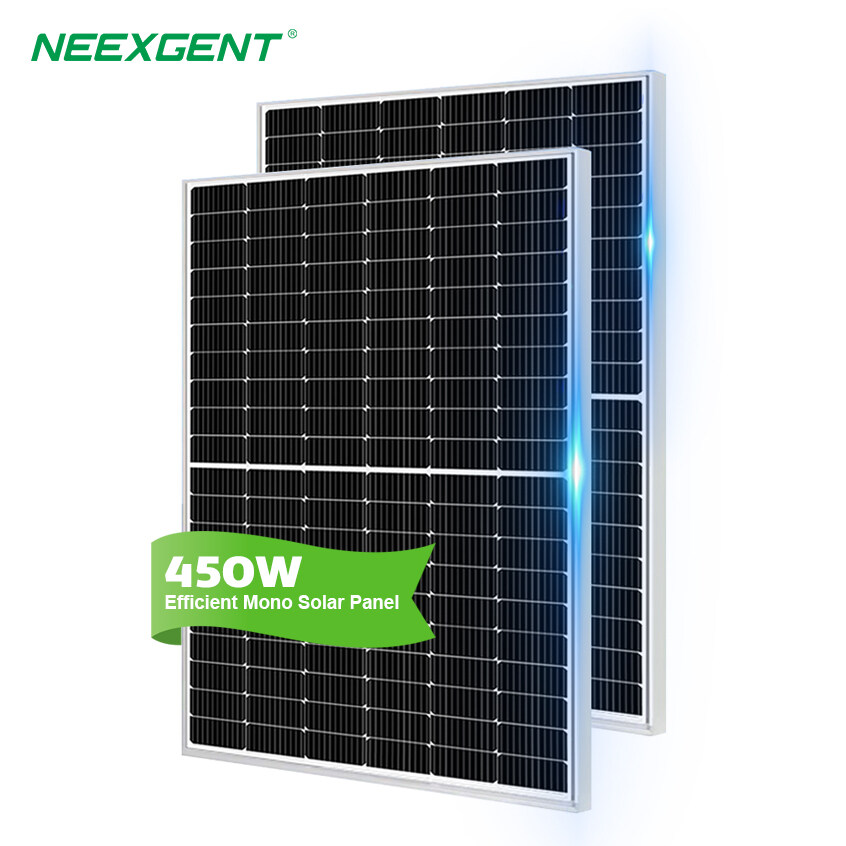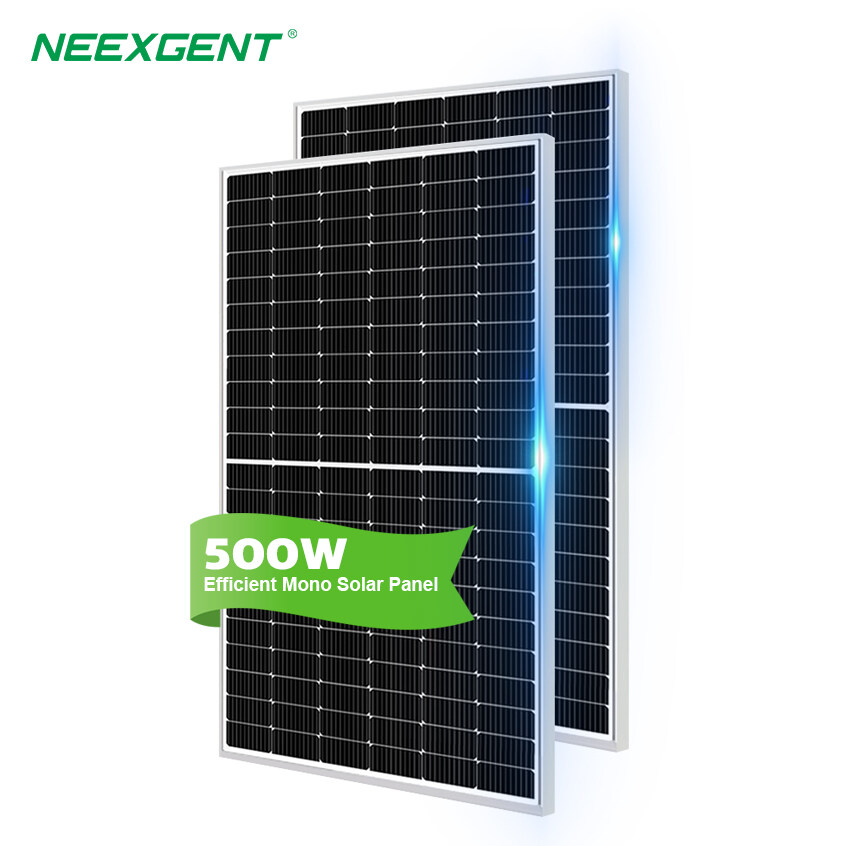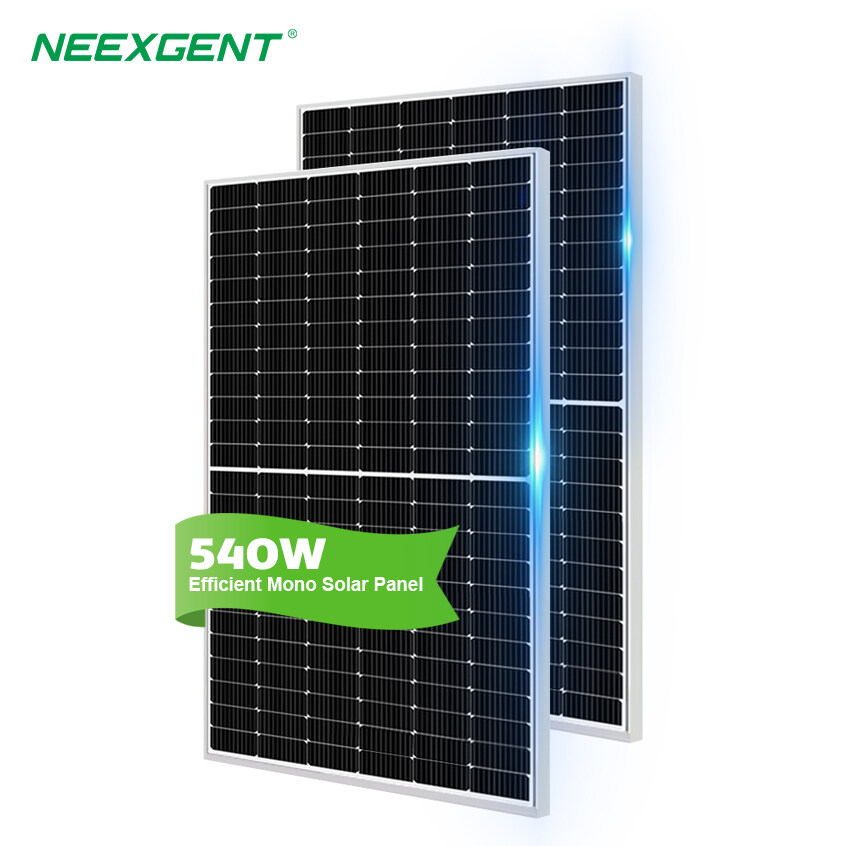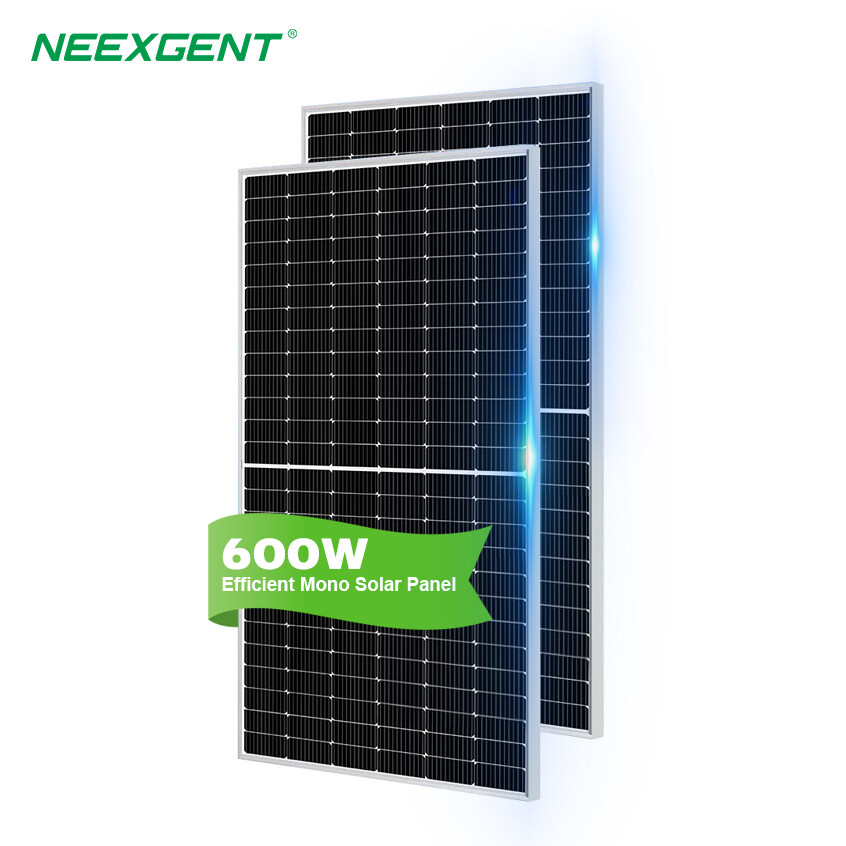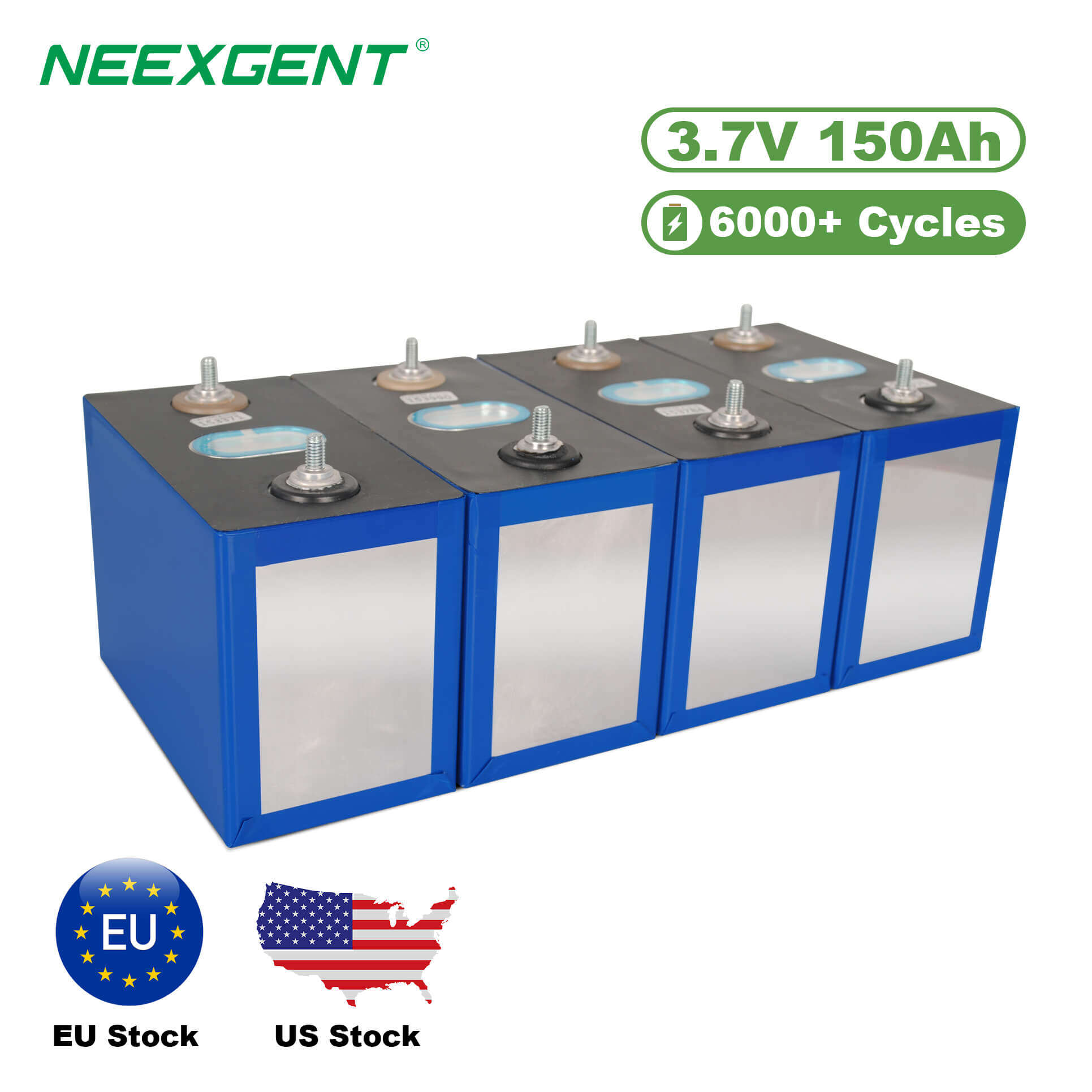As the global push for renewable energy accelerates, both homeowners and business owners are increasingly turning to solar power as a clean, cost-effective energy solution. However, the solar systems used in homes and commercial properties are not identical. While both harness sunlight to generate electricity, residential and commercial solar panels differ in several key ways, including design, size, installation, efficiency, cost, and regulations. Understanding these differences is crucial for selecting the right system to meet your energy needs and long-term goals.
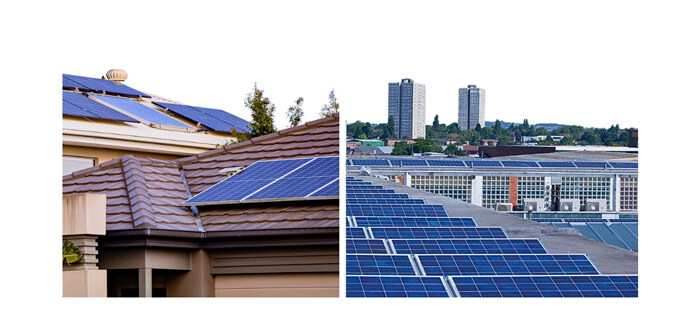
1. System Size and Scale
Residential Solar Systems:
Typically, a residential solar panel system is designed to meet the energy needs of a single household. The system size usually ranges between 3 kW and 10 kW, depending on the home's energy consumption and available roof space. A standard residential solar panel might measure about 65 inches by 39 inches (roughly 5.4 feet by 3.25 feet) and generate around 250 to 400 watts per panel.
Commercial Solar Systems:
Commercial systems are significantly larger, often exceeding 100 kW, and in some industrial applications, even reaching into the megawatt range. These systems are designed to power large office buildings, manufacturing facilities, or entire business campuses. Because of their scale, they require more space and more complex electrical infrastructure.
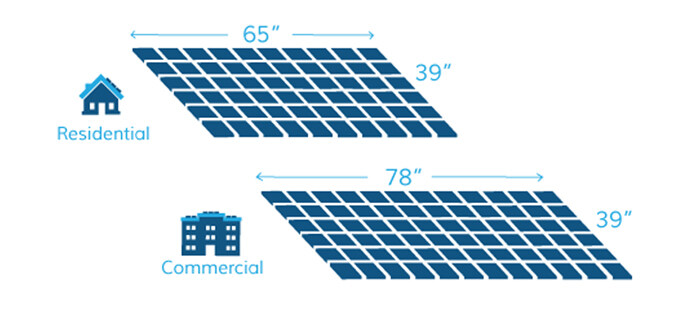
2. Panel Design and Efficiency
Panel Size and Output:
Commercial solar panels are generally larger than residential ones. While residential panels usually have 60 solar cells, commercial panels often contain 72 or more, increasing their power output. A typical commercial panel can generate 350 to 500 watts, making them more efficient in terms of power-to-space ratio.
Efficiency:
Commercial panels are usually built with higher efficiency in mind to maximize output from larger installations. They often incorporate more advanced photovoltaic technology, like monocrystalline silicon cells, bifacial designs, or half-cut cells, which allow for higher energy yields.
Aesthetics:
Homeowners may prioritize the visual appearance of solar panels, especially when installed on visible rooftops. This leads to a preference for all-black panels or integrated designs. In contrast, commercial users prioritize performance over appearance, and therefore may opt for more industrial-looking but efficient designs.
3. Installation Differences
Mounting Options:
-
Residential: Most home systems are roof-mounted using racking systems designed to fit typical shingle, tile, or metal roofs.
-
Commercial: Commercial installations are more varied. They may be mounted on flat rooftops using ballasted systems or installed as ground-mounted arrays, especially when land is available.
Roof Considerations:
Residential roofs often have limited space and irregular layouts due to chimneys, vents, and gables. Commercial buildings usually have flat, expansive roofs with fewer obstructions, simplifying the installation process and allowing for easier scaling.
Time and Complexity:
Residential installations typically take 1–3 days, while commercial installations can take weeks or even months due to their size, permitting complexity, and integration with existing electrical systems.
4. Cost and ROI
Initial Investment:
Residential systems are cheaper in total cost—generally ranging from $10,000 to $30,000 after tax credits. Commercial systems can cost hundreds of thousands or even millions of dollars, depending on size and complexity.
Cost Per Watt:
Despite the higher overall price, commercial systems tend to have a lower cost per watt due to economies of scale. Larger systems benefit from bulk purchasing, more efficient labor use, and higher system efficiency.
Return on Investment (ROI):
-
Residential: Homeowners usually see ROI in 6–10 years, depending on electricity rates, system size, and available incentives.
-
Commercial: Businesses may recoup their investment faster, often within 3–7 years, thanks to larger utility bill savings, tax deductions (e.g., MACRS depreciation), and commercial-scale incentives.
5. Grid Connectivity and Energy Usage
Energy Consumption Patterns:
Homes generally consume electricity intermittently—peaking in the morning and evening. Businesses often have more consistent and higher energy demands during daylight hours, which align well with solar production.
Net Metering and Storage:
Residential solar often relies on net metering—sending excess energy to the grid in exchange for credits. Battery storage is optional but becoming more common. Commercial systems may incorporate more sophisticated energy management systems, battery banks, or demand response programs to optimize grid interaction and minimize peak charges.
Three-Phase Power Compatibility:
Commercial buildings often use three-phase electrical systems to handle higher loads. Commercial solar inverters must be compatible with these systems, whereas residential solar inverters are generally single-phase.
6. Permitting and Regulations
Regulatory Complexity:
-
Residential: Permitting is usually handled at the municipal level and can be completed relatively quickly.
-
Commercial: Permits for commercial solar systems can be more complex, often involving state or utility-level inspections, engineering reports, zoning clearances, and environmental assessments.
Incentives and Tax Benefits:
Both residential and commercial installations may qualify for the federal Investment Tax Credit (ITC), but commercial systems can also benefit from accelerated depreciation (MACRS), local commercial energy grants, and utility-scale solar procurement programs.
7. Maintenance and Monitoring
Residential Maintenance:
Most home systems require minimal maintenance beyond occasional panel cleaning and annual inspections. Many include monitoring apps for homeowners to track performance.
Commercial Maintenance:
Given their scale and economic importance, commercial solar systems require more robust maintenance plans, including scheduled inspections, performance monitoring, inverter servicing, and possibly cleaning contracts. Many commercial setups are monitored 24/7 via cloud platforms to ensure maximum uptime.
8. Lifespan and Warranty
Panel Lifespan:
Both residential and commercial panels typically last 25 to 30 years, though degradation rates and environmental conditions can impact longevity.
Warranties:
-
Residential: Panel warranties usually cover 25 years for performance and 10–12 years for workmanship.
-
Commercial: Warranties for commercial systems may include longer or custom coverage, with service level agreements (SLAs) in place to guarantee uptime and performance metrics.
9. Environmental and Branding Impact
Environmental Responsibility:
Both systems contribute to sustainability goals by reducing greenhouse gas emissions and fossil fuel dependency.
Corporate Social Responsibility (CSR):
For businesses, solar adoption is often part of broader ESG (Environmental, Social, Governance) goals. Installing solar panels can improve public perception, attract environmentally-conscious clients, and serve as a visible symbol of corporate responsibility.
Home Value:
For homeowners, solar panels can increase property value. Studies show that solar-equipped homes sell faster and at a premium compared to similar non-solar homes.
Conclusion
While both residential and commercial solar panels operate on the same fundamental principles, their design, scale, and deployment differ significantly to suit their specific applications. Homeowners prioritize aesthetics, ease of installation, and upfront cost savings, while businesses focus on performance, scalability, and long-term ROI.
Choosing the right type of solar system depends on your energy usage, available space, budget, and long-term goals. Whether you're a homeowner trying to cut down your electricity bill or a company aiming to reduce operational costs and environmental impact, solar power remains a powerful and increasingly accessible solution for a sustainable future.
FAQs: Residential vs. Commercial Solar Panels
What is the main difference between residential and commercial solar panels?+
The primary difference lies in their scale and application. Residential panels are smaller and designed for homes, while commercial panels are larger, more efficient, and used for businesses or industrial properties.
Are commercial solar panels more efficient than residential ones?+
Yes, commercial solar panels typically have higher power output and efficiency due to their larger size and advanced cell technology, allowing businesses to generate more electricity per panel.
Can I use commercial solar panels for my home?+
Technically yes, but it’s not practical for most homes due to size, voltage requirements, and roof compatibility. Residential panels are specifically designed for smaller, angled rooftops and standard home electricity systems.
Which solar system has a faster return on investment (ROI)?+
Commercial solar systems often have a faster ROI (3–7 years) compared to residential systems (6–10 years) due to higher energy savings, tax advantages, and economies of scale.
Do residential and commercial solar systems qualify for the same incentives?+
Both can qualify for the federal Investment Tax Credit (ITC), but commercial installations may also benefit from additional incentives like MACRS depreciation, state-level grants, and utility rebates tailored for businesses.

